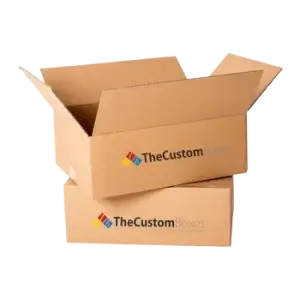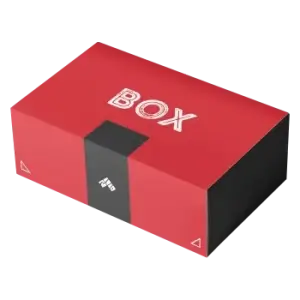Shipping Box Strength: Everything
You Need To Know
Before crafting custom boxes to transit your outstanding products during transportation, you must understand the significance of choosing the right shipping packaging boxes. Read this blog post to learn what shipping box types, strengths, and materials suit your fragile and bulky products.

Making the proper shipping box choice is crucial to ensuring your goods arrive at their destination undamaged. Understanding shipping box strength ratings is key to selecting the appropriate packaging for heavy or fragile items. This ensures safe delivery, whether shipping in bulk or across the country. Goods are more likely to be damaged during transit if the box is not strong enough. This could result in extensive returns and unhappy consumers. This article will help you choose the best custom corrugated boxes by explaining box strength. We will break down the ratings and certifications that help evaluate the strength of moving boxes. These are Edge Crush Test (ECT) and Bursting Test (Mullen Test). These tests ensure the boxes' durability and suitability for various shipping needs. Let’s begin together and craft wonderful shipping cardboard boxes.
Cardboard Shipping Boxes: The Ultimate Packaging Powerhouse
Layers of material are used to strengthen the packaging in corrugated boxes. Unlike standard boxes, made from a single sheet of material, these boxes feature two sheets of cardboard fluting between them. This added layer provides extra strength and durability for shipping. Generally speaking, cardboard boxes aren't good for shipping since the thick paper of heavy duty shipping boxes protects the contents. The strength of corrugated boxes varies according to the size, weight, and fragility of the goods they hold.
Shipping Box Strength: The Core Of Unstoppable Packaging
Before delving into particular varieties, let's first examine what makes cardboard boxes resilient to transportation conditions. Because of their structural layers, cardboard boxes—mostly comprised of corrugated fiberboard—offer exceptional strength. These consist of:
- Outer Liner: The outer liner shields against external factors.
- Medium (fluting): They offer protection from crushing and cushioning.
- Inner Liner: It preserves the product within.
A box's Edge Crush Test (ECT) and Bursting Strength are frequently used to gauge its strength. Both measures show the pressure a corrugated card box can sustain before failing.
Exploring Cardboard Box Corrugated Grades And Strength

After highlighting the significance of box strength, let's examine the various cardboard box and paper grades and their unique advantages. When classifying these cardboard boxes by grade, they primarily focus on single, double, and triple walls.
Single Wall Boxes
These are better suited for lightweight objects. Custom single wall boxes are constructed with one layer of fluting between two sheets of liner paper. Their ECT values typically fall between 23 and 44 lbs/inch and have good burst strength.
Double Wall Boxes
These are more suited for heavier objects since they have two layers of fluting sandwiched between liners. This increases their rigidity and stacking strength. Their ECT values range from 42 to 82 pounds per inch.
Triple Wall Boxes
This design offers maximum strength and protection with three layers of fluting and four-liner sheets. The added layers enhance durability, making the corrugated carton boxes ideal for heavy or fragile items. With ECT values of up to 110 lbs/inch, they are excellent for fragile or heavy objects.
To choose the corrugated shipping boxes that best suit your requirements, it is essential to comprehend these grades.
How Do We Measure Corrugated Box Strength?

A number and letter (e.g., 32B or 32ECT B) indicate the heavy duty cardboard sheets' strength. The numbers show the Edge Crush Test (ECT) rating. This means the maximum weight that a single sheet can support when standing on its edge. The letter explains the corrugate's fluting or how tightly its waves are packed. Let's examine the meanings of these two. Knowing the strength ratings is essential for choosing the correct shipping box. These ratings determine the box's durability and suitability for various shipping needs. The main elements that go into determining the strength of a shipping box are broken down as follows:
Box Manufacturer’s Certificate (BMC)
Most corrugated ECT chart boxes have the BMC printed on the bottom. It offers vital details regarding the heavy duty cardboard box's functionality and strength. The certificate includes information on the type of box and its weight capacity. It also provides results from strength tests like the Edge Crush Test (ECT) and the Bursting Test (Mullen Test). These factors help ensure the box meets shipping requirements. Knowing the BMC guarantees that you will select a box that satisfies the particular specifications of your shipping requirements.
Edge Crush Test (ECT)
The ECT calculates the corrugated box's stacking strength or the pressure it can bear when stacked. The force required to crush the box edges is shown in pounds per inch. Typical ECT ratings consist of:
| ECT Ratings |
Ideal For |
|
32 ECT |
Common for single-wall boxes, suitable for goods weighing in the middle. |
|
44 ECT |
Fits double-wall boxes and larger loads. |
|
48 ECT And Above |
This is for triple-wall boxes or bigger, bulkier items. |
The flute shipping box may support more weight when stacked if its ECT rating is higher.
Bursting Test (Mullen Test)
|
Rating |
Ideal For |
|
200 psi |
The standard pressure for single-wall boxes is 200 psi. |
|
275 psi |
It is ideal for double-wall cartons or larger goods. |
|
350 psi And Higher |
Made for fragile or heavy items that need the highest level of protection. |
Edge Crush Test (ECT) Vs. Mullen Test
Understanding the ratings below will help you choose the right box strength. The perfect custom corrugated cardboard thickness protects your goods and reduces damage. This ensures cost-effective shipping while keeping your items safe. Here are the significant differences between ECT and the Mullen test.
| ECT |
Mullen Test |
|
ECT is the best way to ensure the box can tolerate stacking pressure for boxes stacked on pallets or in storage. |
When internal pressure is the primary issue, like in the case of fragile or high-impact shipments, the Mullen Test is more suitable. |
|
Give ECT ratings top priority if your shipping scenario demands stacking a lot of weight. |
The Bursting Test rating should be the main concern when shipping delicate or fragile objects. |
Find The Right Corrugated Sheet For Your Custom Boxes

The Custom Boxes provide the following five corrugated sheet options: 23ECT B, 32ECT B, 32ECT C, 32ECT E, and 44ECT C. These advantages are the most economical ways to meet almost all non-industrial shipping requirements. Here is useful information to help you choose the right sheet type for your box as you weigh your alternatives. Please take note that these are our suggestions.
Flutes |
Flute Types |
Definition |
Box Style |
Use If |
Avoid If |
|
23ECT |
B Flute |
Economy thickness: 1/8". Our cheapest, lightest board has the least amount of source material. It is more likely to be crushed because it is less rigid or sturdy than other options. |
LM, TL, OPF, Tray |
You want to keep prices down, transport things that weigh less than five pounds together, or want a simple print on the outside of the box. |
You wish to print on the inside of the box, you have a large box (more than 32 inches L + W + H), and you send heavy things (>15 lbs). |
|
32ECT |
B Flute |
Standard thickness: 1/8". It is more rigid and stronger than 23B, while it is more cushioned and shock-resistant than 32E due to its higher ECT rating. |
RSC, LM, TL, FPF, OPF |
The total weight of the things you transport is between 15 and 25 pounds.
|
You ship bulky, hefty things.
|
|
32ECT |
C Flute |
11/64" thick for strength and cushion. With considerably more padding, this is one of our two thickest alternatives. |
Large LM, Large TL, RSC, FPF, OPF, Tray |
You transport things that weigh between 15 and 25 pounds together, or you have a literature mailer or tab-locking box larger than 30 inches in length, width, and height. |
You ship tiny or light materials. A B flute may cost 15–25% less than a C flute.
|
|
32ECT |
E Flute |
Thickness of design: 1/16". It is more visually appealing and thinner than 23B and 32B. It has the same ECT rating as 32B but provides less cushioning and is more prone to bowing.
|
LM, TL |
The total weight of the things you transport is between 15 and 25 pounds. You want to print on the inside of the box, have an immaculate design, or have an excellent printing finish. Because the material is thinner than the B or C flute, it is perfect for spaces with limited storage. |
You ship tiny or light materials. The cost of raw materials for 23 ECT can be 15–25% lower than for 32 ECT.
|
|
44ECT |
C Flute |
High Strength: thick, 11/64". Our most costly and thickest alternative is heavy-duty board.
|
RSC, FPF |
You have a valuable product that requires heavy-duty crush protection, or you send products that weigh up to 40 pounds combined. |
You ship tiny or light materials. The cost of raw materials for 44 ECT can be 40–50% more than for 32 ECT. |
Final Thoughts
Some factors that go into creating sturdy shipping boxes need to be re-examined. It has also been discovered that the many grades, measurements, and tests performed on the box affect its strength, which is crucial for transportation. We hope you now possess the knowledge necessary to make wise choices. Remember that the box's robustness and quality speak for the quality you offer. Make thoughtful decisions, pack sensibly, and allow the shipping box to discuss your dedication. The Custom Boxes is available to serve your company needs whether you're looking for high-quality custom packaging supplies in the USA, including shipping boxes and more.















